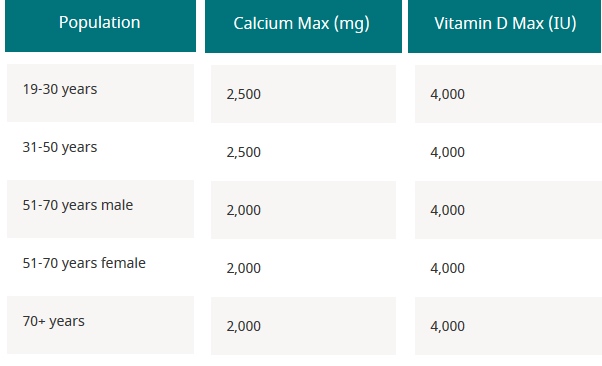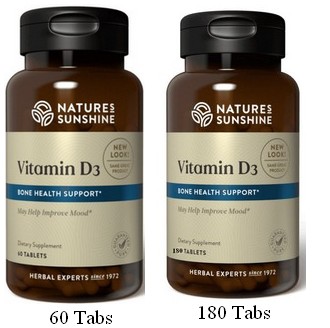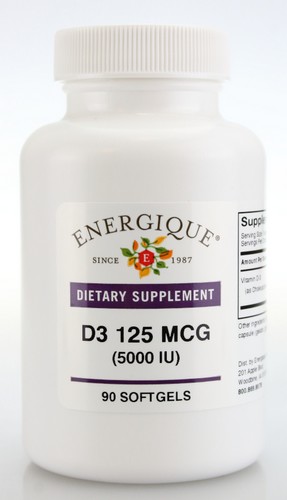

About Vitamin D3
This vitamin is considered number one nutritional deficiency in America.
It has been estimated that about 90% of the population is deficient. So, to reduce your susceptibility to viral infections try one or two tablets of Vitamin D3 daily.
Many people are so deficient that three or four tablets is better.

When in doubt, I always go back to this simple fact: every tissue and cell in the body has a vitamin D receptor.
Why would they be there if they were not having an effect? We are gradually coming to an understanding that perhaps all cells in our bodies respond positively to activated vitamin D, raising the prospect of an untold number of benefits associated with exposure to UVB from natural sources.
From the medical community
1. Dr. Frank Lau, an associate professor of clinical surgery at Louisiana State University, said his research clearly shows that vitamin D can make a difference.
Patients whose levels are low have a weaker immune response to the novel coronavirus, he said. Vitamin D strengthens it, allowing the body to develop antibodies to the virus and prevent it from spreading throughout the body, Lau said.
2. Led by postdoctoral researcher Ali Daneshkhah, the study's conclusion was the same: Low vitamin D levels were linked to a hyperactive immune system.
The so-called "sunshine vitamin" bolsters immunity and prevents an overactive immune response.
How Much Vitamin D and Calcium Do You Need?
The Endocrine Society and The Institute of Medicine have suggested recommended daily maximum consumption amounts that you should not exceed for your safety:
 Vitamin D3
Vitamin D3
- The Canadian Cancer Society ( 2007 ) recommends Vitamin D3 for Cancer.
- Findings from Northwestern and Harvard University (Cancer Epidemiology Biomarkers & Prevention, September 2006) show that vitamin D3 may dramatically reduce pancreatic cancer. (15)
- Harvard School of Public Health (2006) found that vitamin D3 is associated in men with a 17 percent reduction in all cancers incidences and a 29 percent reduction in mortality. (16 )
- A study published in The American Journal of Clinical Nutrition (June 2007) found supplemental of vitamin D3 in conjunction with calcium substantially reduced risk of all cancers in post – menopausal women. (17)
- For which scientists have linked seasonal deficiencies of vitamin D3 to epidemics of influenza. (18)
- United Kingdom researchers (2007) wrote that vitamin D3 may help prevent the development of multiple sclerosis. ( 19 )
Why Vitamin D?
In an abstract entitled “Vitamin D: Importance in the prevention of cancers, Type I diabetes, heart disease, and osteoporosis” published in the American Journal of Clinical Nutrition, Michael F. Holick is quoted saying that “…Studies in both human and animal models add strength to the hypothesis that the unrecognized epidemic of vitamin D deficiency worldwide is a contributing factor of many chronic debilitating diseases.” (1)
What is the difference between Vitamin D2 and D3?
According to Alan R. Gaby, in the October 2005 Townsend Letter for Doctors and Patients in an article entitled, “Vitamin D3 is more potent than vitamin D2, “…Vitamin D3 is a naturally occurring form of Vitamin D that occurs in the human body [when it is exposed to sunlight], whereas vitamin D2 is produced by irradiating yeast with ultraviolet light…” Since vitamin D research began in the 1930’s it was most generally thought that “…Vitamin D3 and Vitamin D2 are equally effective in humans…” Gaby continues. But, there are a plethora of research studies over the past several decades that address and compare which is found to be the most readily available in the body.
Research shows that physicians generally find that large amounts of D2 taken over varied periods of time, “…produce little or no change in serum 25-hydroxyvitamin D [25(OH)D] concentrations.” Gaby also states, “…that the potency of vitamin D2 may be as low as 10% that of Vitamin D3.”
 What Is Vitamin D-3 Anyway?
What Is Vitamin D-3 Anyway?
Most individuals call it a Vitamin…but, it is really a hormone. According to Dr. Anthony Norman, PhD, a renowned Vitamin D researcher and professor of biochemistry and biomedical sciences from the University of California – Riverside, “‘…an understanding of the substance known as Vitamin D is complex.” The Fall 2007 edition of Natural Solutions magazine quotes Norman further stating that, “…vitamins, by definition, are organic compounds necessary in small quantities in our diet. Since we synthesize vitamin D3 in our skin in the presence of sunlight – a type of cholesterol reacts with ultraviolet light and gets converted into vitamin D3.“ This is then a hormonal type process versus a naturally occurring vitamin. (2)
Vitamin D is vital to the health of your skeletal and immune systems. The body manufactures this essential vitamin through sun exposure, making it difficult to obtain adequate amounts of vitamin D during the cloudy winter months. There is a great deal of new research which shows that Vitamin D3 “…factors into far more than the critical tasks of building and maintaining healthy bones. Touted as the new, (yet old and safe), wonder drug, vitamin D3 may be one of our body’s best defenses against various cancers, autoimmune diseases, respiratory and skin infections, and declining physical performance as we age.” (3)
As basic as it may seem, getting just a few minutes of direct sunlight per day might indeed be enough to ward off unwanted disease processes. There is a direct correlation between Vitamin D deficiency and where you live, the amount of time you spend in the sun without sunscreen, etc. It is the areas of the world that do not have regular, direct sunlight, that suffer the most. If you happen to reside on the sunny equator never fear... but if you call Alaska home on the other hand it might be beneficial to consider a little extra D3. Without getting into great detail, research shows that the proximity one lives according to the latitudes on the globe is an essential player in the amount of sunlight one receives.
It appears that research concludes that Vitamin D3 is the form of Vitamin D that should be used for supplementation because it is naturally occurring in the body. It is imperative to remember though that some subsets of patients, such as those “…with parathyroidism or other Vitamin D-responsible conditions that are well controlled on high-dose Vitamin D2 should probably not have their regimen changed. When changing from supplementation with D2 to that of D3 it is important to have your blood drawn on a regular basis until optimum levels of 25(OH) D have been achieved in the blood (4).
 What does Vitamin D do?
What does Vitamin D do?
In the body, vitamin D is responsible for maintaining normal blood levels of calcium and phosphorus and for helping to build strong bones. Vitamin D works with other vitamins, minerals and hormones to promote bone mineralization. Additionally, research shows that vitamin D may help support a healthy immune system. In all reality, this barely scratches the surface of the benefits of D-3 supplementation. “Vitamin D is very important for Calcium and Phosphorus absorption, to strengthen bones and teeth. It also aids in assimilation of Vitamin A (5).”
joint pain and stiffness
backache
tooth decay
muscle cramps, [and] hair loss. (6) as well as the more commonly associated childhood illness of Ricket’s.
Persons that might benefit from D-3 Supplementation
Cancer
According to the Harvard School of Public Health, “If everyone had adequate Vitamin D levels in their bloodstreams, it would be equivalent to eliminating a big portion of cancer.
Calcium Absorption/ Osteoporosis
In a research study conducted by Dr. Robert P. Heaney MD from Criethton University, it was discovered that when Vitamin D3 was added to the regimen of 34 post-menopausal women, two-thirds of their calcium absorption increased. According to Dr. Heaney, “…in brief, raising serum 25 (OH)D [also known as Vitamin D3] from 20 to approximately 80nmol/ L improves Ca [calcium] absorption, reduces osteoporatic fracture risk and is associated with higher BMD [bone mineral density].”
Asthma
“Researchers from King’s College London have found that vitamin D3 could substantially improve the responsiveness of these patients to steroid treatment, offering them hope of an improvement in their condition (7).” These findings were published in the Journal of Clinical Investigation on December 10, 2005.
Auto-immune Diseases
There are many studies that show the correlation between “…higher levels of Vitamin D and a lower incidence of multiple sclerosis. Similarly, studies have shown low blood levels of vitamin D are associated with numerous autoimmune diseases. Vitamin D offers benefits for autoimmune diseases because of its ability to influence T cell development and inactivate Natural Killer cells.” (8)
Colds and Flu
Could there be a correlation between the flu season running from November through February with the incidence of decreased sunlight? Dr. John Cannell, MD, a psychiatrist at Atascadero State Hospital in California and executive director for the nonprofit Vitamin D council, found that in “…2005 a nasty flu virus hit the forensic psychiatric hospital where Cannell supervises a ward. While 10 percent of the facility’s patients caught the bug, none of his patients did.” At that point he began to investigate if there was a correlation as to whether the additional D3 that these patients had been taking played a part. His work found that “…vitamin D3 augments the antimicrobial compounds produced by white blood cells, and thus helps boost the resistance to flu – and scores of other viruses that cause the common cold. “ (9)
Fibromyalgia / CFS
“Vitamin D deficiency is often misdiagnosed as fibromyalgia,” according to Michael F. Holick, in the American Journal of Clinical Nutrition. (10) This information could be the integral link in this confusing, frustrating illness.
Skin Infections/Wound Healing
In an article entitled “Immune regulation: Vitamin D3 promotes immune function in the skin, “ published in Nature Reviews Immunology, it is written that “the importance of vitamins for optimal health has been known for a long time, but two recent papers reveal a previously unknown role for vitamin D3 in regulating immune responses in the skin.” (11) http://pid.nci.nih.gov/PID/2007/070313/full/nri2047.shtml
Periods of Rapid Growth such as Adolescence
According to Dr. Connie Weaver, PhD, Vitamin D researcher from Purdue University in the presentation from The American Society of Bone and Mineral Research, Adolescents need increased vitamin D. Weaver stated that “20-50% of adult bone mass is acquired during puberty.” She stated that there is an imperative time frame, according to work published in the Journal of Bone and Mineral Research, that from the age of 11-13 is the important time for girls and from ages 13-15 for boys. It is important to remember that one’s geographical location, exposure to the sun sans sunscreen, etc. all play a part in the Vitamin D absorption at this crucial time in their lives.
The Nature's Sunshine Advantage
Many companies offer synthetic vitamin D products. NSP Vitamin D3 is completely natural. According to the NSP label on the new product, it is stated that the D3 is derived from lanolin harvested from BSE-free sheep’s wool fat from New Zealand and Australia. These animals are certified BSE-free which means that they have been tested for bovine spongiform encephalopathy, also known as Mad-Cow Disease. This disease process is specific to beef, but it appears that NSP is covering all bases in testing for this in a sheep-based product. The testing could also be done due to the fact that the sheep could have possible ingested animal feed that contained beef or beef by-products.
Note from Steven Horne
One of the reasons people may be more prone to viral infections in the winter is because they have lower levels of Vitamin D3. This vitamin is considered number one nutritional deficiency in America. It has been estimated that about 90% of the population is deficient. So, to reduce your susceptibility to viral infections try one or two 4000 IU tablets of Vitamin D3 daily. Many people are so deficient that three or four tablets is better.
Excerpt from the excellent book: The Vitamin D Solution
A 3-step strategy to cure our most common health problems
By Michael F. Holick, Ph.D., M.D.
For some, even physicians, it's incomprehensible that vitamin D can reduce the risk of heart attack by as much as 50 percent; reduce the risk of common cancers of the colon, prostate, and breast by as much as 50 percent; reduce the risk of infectious diseases, including influenza, by as much as 90 percent; reduce the risk of type 1 diabetes by 78 percent in a child who gets 2,000 IU of vitamin D a day in the first year of life; decrease the risk of type 2 diabetes; decrease the risk of dementia and depression; wipe out cases of fibromyalgia that have been misdiagnosed; and dramatically decrease the risk of multiple sclerosis and other auto-immune diseases.
When in doubt, I always go back to this simple fact: every tissue and cell in the body has a vitamin D receptor. Why would they be there if they were not having an effect? We are gradually coming to an understanding that perhaps all cells in our bodies respond positively to activated vitamin D, raising the prospect of an untold number of benefits associated with exposure to UVB from natural sources.
Ingredients
Each NSP tablet contains 2000 IU of natural Vitamin D-3.
Other ingredients include: Dicalcium Phosphate, cellulose (plant fiber), stearic acid, and magnesium stearate (vegetable).
Recommended Use
Take 1-2 tablets daily with a meal
The recommended adequate intakes for vitamin D are inadequate, and, in the absence of exposure to sunlight, a minimum of 1000 IU vitamin D/day is required to maintain a healthy concentration of 25(OH)D in the blood (12).
Research differs as to the amount needed by each individual. Some studies state that 2000 IU /day is essential in preventative maintenance. But, there are some works cites that up to 45,000IU day could be necessary in restorative work.
Works Cited
1. Holick, Michael F. (March 2004). Vitamin D: Importance in the prevention of cancers, Type I diabetes, heart disease, and osteoporosis. Am J of Clinical Nutrition (79)3, pp. 362-371. Retrieved October 31, 2007 from: http://www.ajcn.org/cgi/content/full/79/3/362.
2. Kucera, Kris. (Fall 2007). Sunshine Super Drug. Natural Solutions p. 35.
3. Holick, Michael F. (March 2004). Vitamin D: Importance in the prevention of cancers, Type I diabetes, heart disease, and osteoporosis. Am J of Clinical Nutrition (79)3, pp. 362-371.
Retrieved October 31, 2007 from: http://www.ajcn.org/cgi/content/full/79/3/362.
4. Hollis, Bruce W., Wagner, Carol L., Drezner, Mark K., and Binkley, Neil C. (2007). Circulating Vitamin D3 and 25-hydroxyvitamin D in Humans: An Important Tool to Define Adequate Nutritional Vitamin D Status. J Steroid Biochem Mol Biol. 2007 March; 103(3-5): 631–634. Published online 2007 January 10. doi: 10.1016/j.jsbmb.2006.12.066. Retrieved November 1, 2007 from: http://www.pubmedcentral.nih.gov/articlerender.fcgi?artid=1868557
5. Ibid
6. Holford, Patrick. (2004). The Optimum Nutrition Bible. The Crossing Press: Berkeley/Toronto.
7. Bradley, Gemma. Asthma Sufferers Resistant to Steroid Treatment Benefit From D3 Supplement. Retrieved 10/23/07 from: http://www. medical newstoday.com/printerfriendlynews.php?newsid=34739
8. Moore, Elaine. ( May 22, 2007). “The Importance of Vitamin D: Why Blood Tests are Essential.” Retrieved November 1, 2007 from: http://autoimmunedisease.suite101.com/blog.cfm/the_importance_of_vitamin_d
9. Kucera, Kris. (Fall 2007). Sunshine Super Drug. Natural Solutions p. 38.
10. .Holick, Michael F. (March 2004). Vitamin D: Importance in the prevention of cancers, Type I diabetes, heart disease, and osteoporosis. Am J of Clinical Nutrition (79)3, pp. 362-371. Retrieved October 31, 2007 from: http://www.ajcn.org/cgi/content/full/79/3/362.
11. Bell, Elaine, (March 2007). Immune regulation: Vitamin D3 promotes immune function in the skin. Nature Reviews Immunology 7, 174-175, | doi:10.1038/nri2047. Retrieved November 1, 2007 from: http://pid.nci.nih.gov/PID/2007/070313/full/nri2047.shtml
12. Holick, Michael F. (March 2004). Vitamin D: Importance in the prevention of cancers, Type I diabetes, heart disease, and osteoporosis. Am J of Clinical Nutrition (79)3, pp. 362-371. Retrieved October 31, 2007 from: http://www.ajcn.org/cgi/content/full/79/3/362.
|